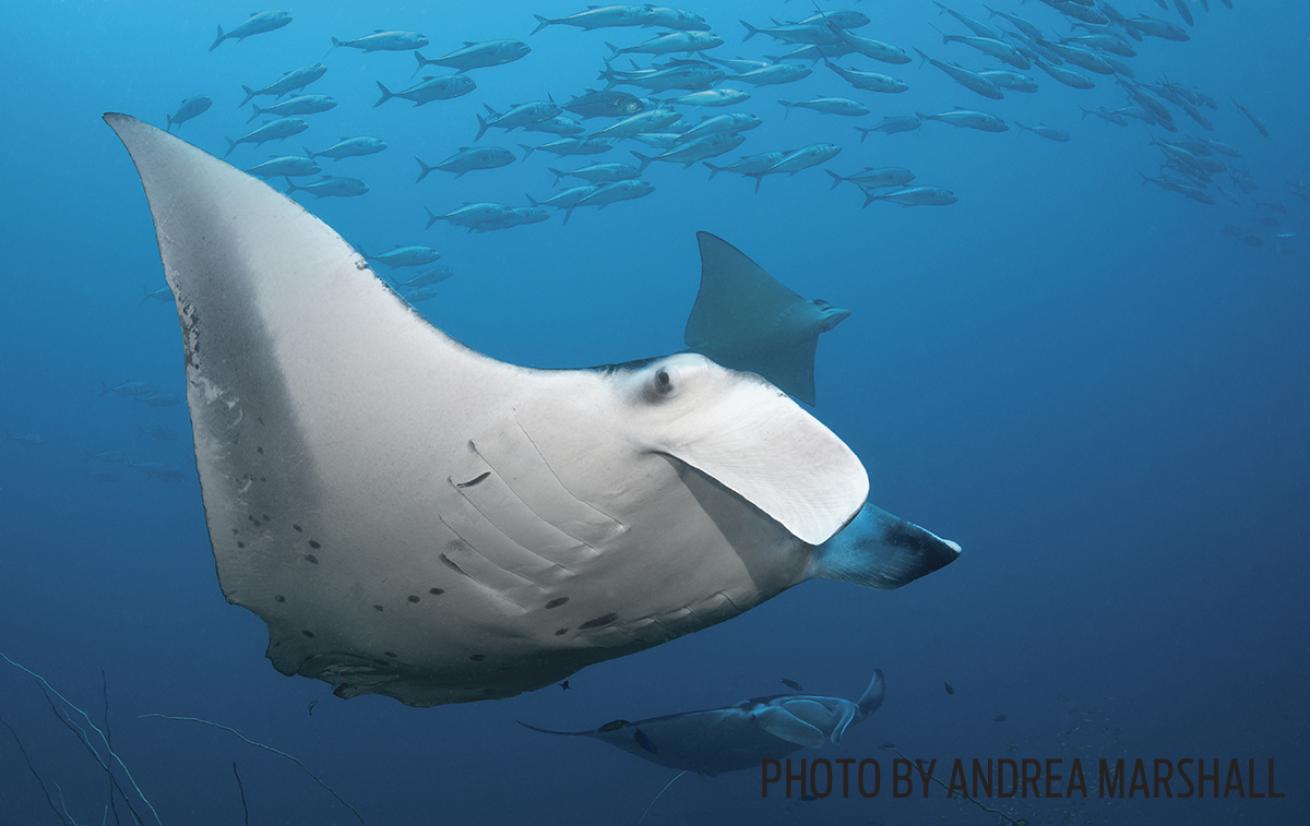The Magical Manta Ray Cleaning Stations in Mozambique

Andrea MarshallA manta ray floats along Mozambique's Manta Reef in the Indian Ocean amid a school of fish in a cleaning station.
Where in the world can you encounter oceanic and reef mantas at the same time? Mozambique’s Manta Reef, for one. The Indian Ocean dive site is one of the few places in the world that offers advanced divers encounters with both species.
Currents can reach up to 6 knots here, and depths of more than 90 feet mean nitrox is preferred. But those who venture to Manta Reef are almost guaranteed a show, as oceanic mantas (Manta birostris) and reef mantas (Manta alfredi) soar through the three main cleaning stations off Tofo.
The dive begins off the southern coast of Mozambique with an 85-foot descent into the middle of an underwater oasis teeming with marine life, including sand sharks, sea turtles, a diverse population of fish and, of course, the rays.
At these cleaning stations, both oceanic and reef mantas circle overhead, slowing their speed as goldies, cleaner wrasse and butterflyfish eat parasites, dead skin, bacteria and mucus off them. This symbiotic relationship helps prevent infections for the mantas and provides food for the cleaners.
David Levack, a manager at Diversity Scuba, Tofo’s longest-operating scuba center, has been diving in Mozambique for eight years and says it is one of the best locations for encounters with these animals. One mistake he sees divers make is encroaching on cleaning process. To fully enjoy the cleaning stations, Levack says,“get down nice and low, and watch for where the abundance of the cleaner fish are.”
Dr. Andrea Marshall, one of the founders of the Marine Megafauna Foundation, first dived Manta Reef 15 years ago, and she’s been hooked ever since. A certified diver since she was 12 years old, Marshall became the first person in the world to complete a Ph.D. on manta rays in 2008. Marshall says the mantas are eager to engage with divers, citing their charisma and curious tendencies she’s witnessed through thousands of dives.
“That’s the beautiful thing about mantas — they’re not afraid,” she says.
But despite the inquisitive nature of these rays, it’s important to know and respect their boundaries. According to Marshall, 75 percent of the mantas in Mozambique suffer from large shark bites, and therefore, they need long periods of cleanings from the cleaner fish.
Studies from the Marine Megafauna Foundation show that, on average, these mantas will spend almost two hours each day in cleaning stations, with some lingering for up to eight hours.
That’s the sad beauty of Mozambique — the show never ends, but the air supply eventually does.
NEED TO KNOW
When to Go: While this site is good to dive year-round, the best time to visit is May through September to avoid the rainy season.
Getting There: A tourist visa is required for U.S. citizens, and most inter- national flights into the Maputo International Airport arrive from South Africa.
Dive Conditions: Water temperature ranges from 72 to 82 degrees F; the average visibility 65 feet, but it sometimes exceeds 100. Currents can reach up to 6 knots.
MORE MANTA DIVING DESTINATIONS
- Manta Night Dive in Kona, Hawaii
- Ecotourism to help mantas in the Maldives with Four Seasons Explorer
- Meet mantas in Mexico's Socorro Islands










